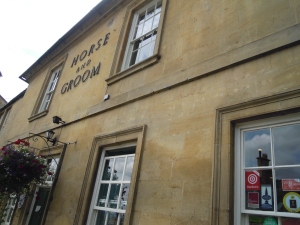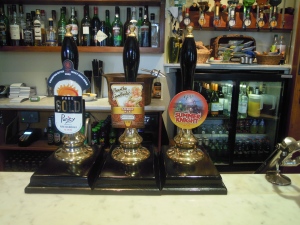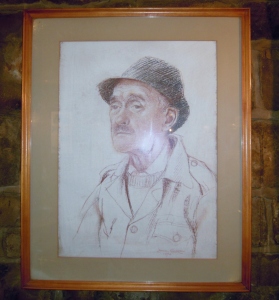
Real ale, or cask conditioned ale, in the U.S. and Canada is still catching on but not to the same extent as in England, and for good reason. There isn’t the cask conditioned ale heritage in the U.S. and Canada that there is in the U.K., and in North America, brewers and pub owners are still learning the intricacies of handling and serving real ale. The English never totally lost real ales, as had happened on this side of the Atlantic, though cask conditioned ales were in serious decline in Britain when the Campaign For Real Ale, CAMRA, began the turnaround in the early 1970s.
Pubs on this side of the Atlantic, even the pubs imported lock, stock and barrel from the U.K., never seem to quite come up to being a real English pub. Is the real ale good on this side of the Atlantic? Yes, some of it, very good, actually. And it would seem brewpubs offer the best way for a brewer to ensure cask conditioned ale is properly maintained from brewery to glass. As an example, The Granite Brewery, Toronto, Ontario, Canada, deserves to survive and thrive because it unerringly offers fine pints of cask conditioned ale. Indeed, some English visitors agree, the Granite sells some of the best pints of real ale they’ve had, outside of England, that is. And to me that’s high praise coming from the Brits.
Admittedly, real ale has latched on to my palate. I prefer the more rounded, full flavour of a cask conditioned ale to a gassed-up filtered beer, though, of course, there are always exceptions. I always drink best available, whether it is cask or keg. If I don’t like a malty brew on offer on cask, I will turn to a hoppy keg or craft beer.
But certainly not all real ale is good. Muddy beers passed off with the ubiquitous, ‘that’s the way it’s supposed to be, or taste’ have ruined a beer experience for more than one adventurous beer drinker in North America. For example, at Chicago’s Goose Island Brewing Company a cloudy, yeast laden IPA with no hope of the much anticipated hop bitterness surfacing, caused me to quickly switch to Goose Island’s Honker’s Ale, a fine pint of filtered ale.
I remember seeing but did not chance drinking a muddy, unfiltered HefeWeizen served in a Portland, Oregon, brewpub that could have floated a sand barge and yet this identical beer populated many nearby tables. I accept the haze factor for this style of beer but not to this extreme. The same brewpub did a credible job of fining its real ale, a slight haze was not uncommon, but my friend, a brewer who once brewed real ales at the former Godson’s Brewery in London, England, preferred the filtered version of the same cask ale I was drinking.
Disappointment also came from the cask conditioned Scottish ale offerings from the much heralded Highland Brewery in New York City, obviously before it closed, where, after a light refreshing 2 Penny Ale and a somewhat thin 60/Dark Mild, which had hints of underdeveloped character, a persistent graininess in the Ben Nevis 80/Brown Ale and a cardboard staleness in the Highlander Special Bitter followed. Is it any wonder the public did not take to these unappealing and ill kept beers? Is it that surprising that the brewery closed? And yet, hardly anyone wants to talk about the downside of real ale and the microbrewery industry.
Will real ale catch on in North America? In time it will find favour with some, a niche product for those beer drinkers lucky enough to be situated near a place where the beer is kept in good nick. Certainly, groups such as CASK! Toronto have helped to make in-roads in that city for the brewers who are willing to go the cask ale route.
But for me there is still nothing quite like visiting an English pub for the right atmosphere for having a pint of cask conditioned ale. Call me spoiled or spoiled for choice, it’s all fine by me.













